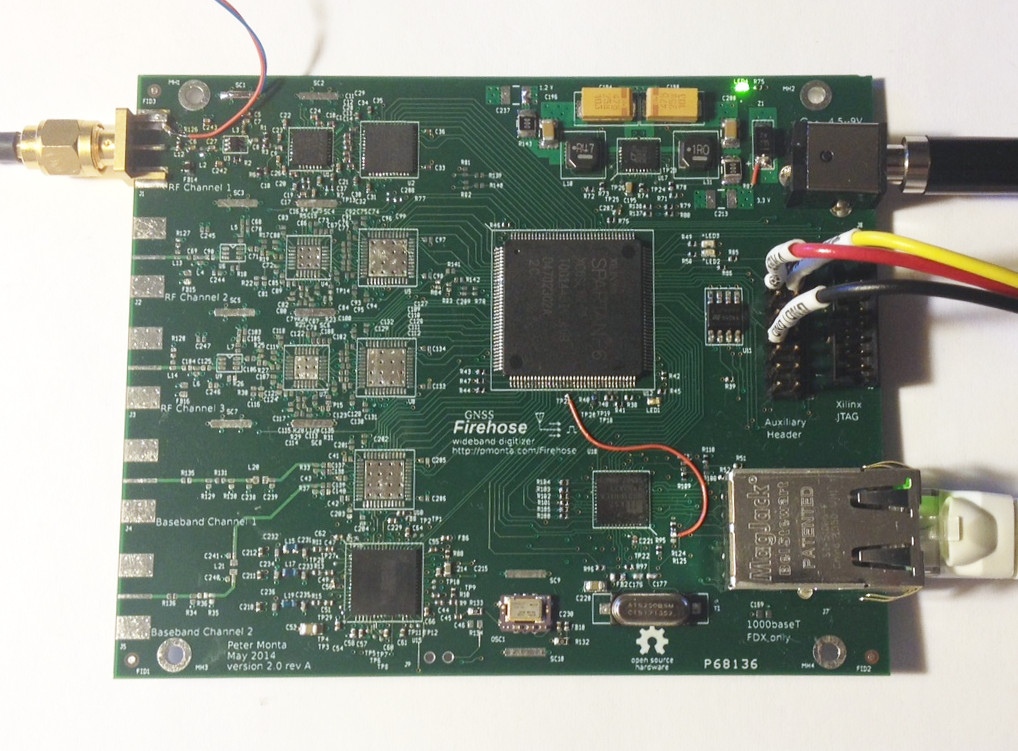I've finally gotten around to updating the GNSS front-end digitizer. Along with a new Ethernet PHY chip (the old one from Vitesse seems to be no longer available), there is an external clock option, an expanded auxiliary header, and a number of small improvements in signal integrity. The external-clock header can accept an external OCXO or rubidium signal, for example; and multiple boards can be driven with a common clock.
Here's a spectrum at L1. Despite the poor antenna placement (almost surrounded by tall trees), the GPS C/A signal shows up quite well as a broad peak of 2 MHz bandwidth. There is substantial ripple in the antenna's ~35 MHz passband, and unfortunately the antenna filtering cuts off around 1595 MHz, so GLONASS signals are suppressed. The signals near 1557 MHz are probably satellite downlinks, and the peak near 1584 MHz is the receiver's DC spur.
The usable alias-free bandwidth of the system is about 50 MHz per channel. At L1 this is enough to cover all the services, from BeiDou B1 starting at 1559 MHz to GLONASS extending to 1610 MHz.
Here's a C/A correlation peak from this recording (PRN 13). The nice sharp corners are a result of using all of the C/A bandwidth:
Next steps are to clean up the software and HDL and to test the other two channels. See previous blog posts for a pointer to the GitHub repository containing the newly-updated design files.



